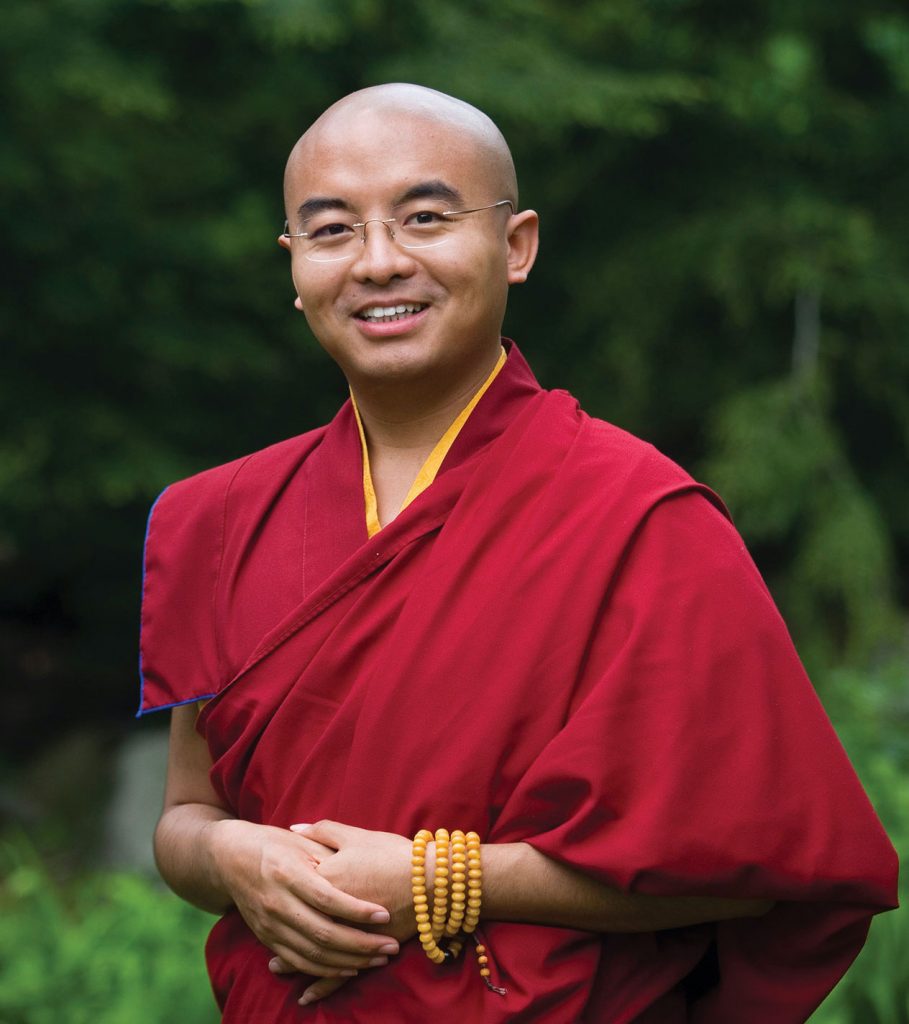As part of a month-long series of events celebrating the 30th anniversary of Tricycle, Helen Tworkov, Tricycle’s founding editor, spoke with Tibetan Buddhist teacher Yongey Mingyur Rinpoche about his experience and outlook during the past year. Tworkov is a student of Mingyur Rinpoche’s, and the two published a book together in 2019 called In Love with the World: A Monk’s Journey Through the Bardos of Living and Dying.
Among the wide range of topics discussed in this exclusive interview was joy—specifically, how Mingyur Rinpoche maintains a joyful outlook in times like these. Mingyur Rinpoche explained how he arrived at his viewpoint by divulging his personal experience with panic, his father’s advice, and how he learned to let things go. Read an excerpt of the interview below, then watch the video to hear Tworkov and Mingyur Rinpoche discuss more, including the pandemic, race, climate change, and advice for practitioners in today’s world.
Helen Tworkov: You have a reputation for being very happy and very joyful, and many of us would like to know more about this because, especially in the last year, it’s really been difficult. So how do you maintain a joyful outlook, a joyful view, a joyful life in the midst of so much confusion? Do you have some secret to share with us?
Mingyur Rinpoche: Don’t tell anybody: I have one secret! I used to panic when I was young, so I was not so happy, actually. My nature, when I was young, was very sensitive. Something would go slightly wrong, then I felt unhappy for weeks. I could not sleep well at night. But what really helped me was meditation practice.
I learned this meditation technique [that has existed] in Tibetan Buddhism for thousands of years. I learned this from my father. The main point of meditation is the transforming of poison into medicine. So panic becomes your friend. Panic becomes your teacher. That’s the main technique.
Of course, it’s not that easy to do that at the beginning. We need to practice step-by-step first. We need to connect with our own awareness. Awareness is our own fundamental nature. Awareness is always calm, peaceful, joyful… Awareness is free! But then we experience panic.
My father said awareness is like the sky, panic is like clouds.
Not only panic, but also depression, not feeling happy, blaming, stress—all of these are clouds, and those clouds don’t change the space. That cloud doesn’t change the sky. So how to do that? We need to connect with the sky. Sky is the awareness.
So to connect with awareness, at the beginning, we can connect through the breath, through the sound, through the body’s sensations. And slowly, slowly, we can use panic as a support for awareness. (Or depression, everything.) Not fighting with panic; welcoming it. There is love. Accept panic. Once we can accept panic, then we can accept that bad friend in your company or in your social circle. If you can accept panic, you can accept the challenging person or difficult environment. But at the same time, accept doesn’t mean give up. You’re not giving up. You’re transforming your friend. You’re trying to help your colleagues. You’re trying to help the world. You’re trying to help the climate. So don’t give up; accept it and let it go. Letting go is not giving up.
That really helped me. When I have a problem that comes to me, I’m not looking for the solution in something else than the problem itself. Actually, the problem can be the solution.
♦
This excerpt has been edited for clarity.
Thank you for subscribing to Tricycle! As a nonprofit, we depend on readers like you to keep Buddhist teachings and practices widely available.
